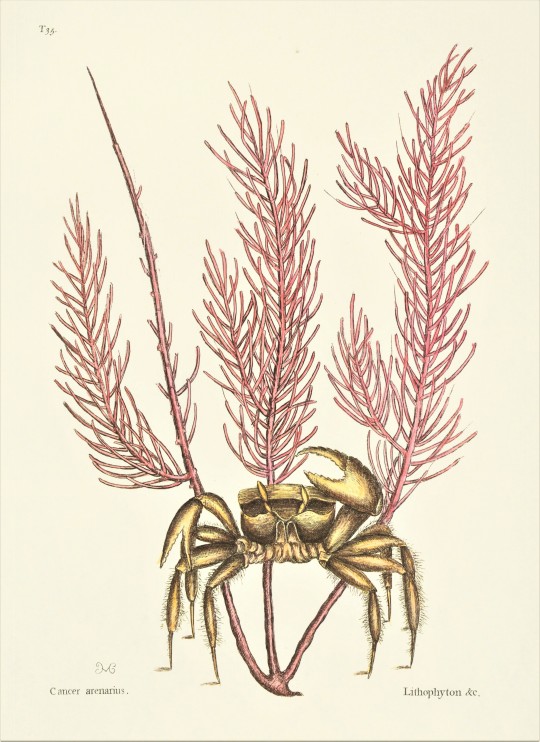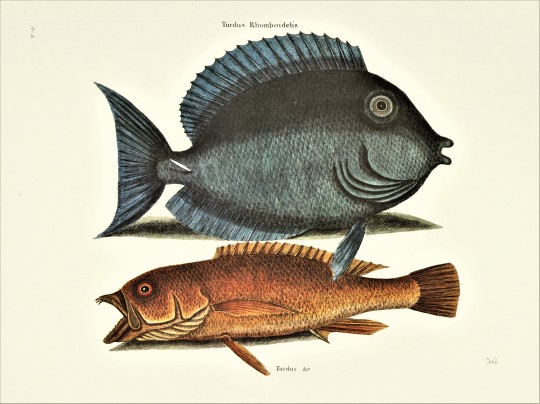#Stoplight Parrotfish
Explore tagged Tumblr posts
Note
Subject: Fish
Hello,
I hope this email finds you in good health. I am contacting you in regards to the fish. It is my understanding that the fish are very important and a matter of national security. Please respond with the fish by Snorpsday.
Warm Regards,
Anon Ymous
Snorpsday fish Delivery

You get a Stoplight Parrotfish
Sparisoma viride
55 notes
·
View notes
Text

fish 15 - stoplight parrotfish
#fish daily#fish#stoplight parrotfish#parrotfish#drawing#i like parrotfish because they are transgender
111 notes
·
View notes
Text

5 notes
·
View notes
Text

THIS TRUMPETFISH IS USING ANOTHER FISH TO HIDE ITSELF WHEN HUNTING
And is working
Many animals use camouflage to avoid detection by others, yet even the most inconspicuous objects become detectable against the background when moving. One way to reduce detection while moving would be to ‘hide’ behind the movements of objects or other animals. Now, researchers have demonstrate experimentally, following field observations, that a trumpetfish (Aulostomus maculatus), a common marine predator, can conceal its approach from its prey by performing a behaviour known as ‘shadowing’, hiding behind, swimming closely next to another, larger and non-predatory fish.
Bicolor damselfish (Stegastes partitus), form highly localised colonies within structures on the reef substrate and exhibit characteristic anti-predatory responses, and are common meal for trumpetfish. Marine researchers working in the coral reefs off Curaçao, set up an underwater system to pull 3D-printed models of trumpetfish and the stoplight parrotfish (Sparisoma viride) being hand-reeled along a clear nylon line from one tripod to another, passing over the colony in the process, which was positioned halfway between the two. When these two 3D printed fishes were together, damselfish were quiet and show low antipredator responses.

-After field observation, marine researchers modeled the ‘shadowing’ behavior.
This is the only known example of a non-human animal using another as a form of concealment. According to researchers, this evidence reveal how predators can actively use another animal as a form of concealment to reduce detection by prey.
Reference (Open Access): Matchette et al., 2023. Predatory trumpetfish conceal themselves from their prey by swimming alongside other fish. Current Biology
VIDEO here
#Aulostomus maculatus#science#marine science#marine biology#biology#actinopterygii#trumpetfish#behavior#Bicolor damselfish
1K notes
·
View notes
Photo

Stoplight Parrotfish, Sparisoma viride, Presidente Intercontinental House Reef, Cozumel, Mexico
107 notes
·
View notes
Note
8, 15, and 38 for the ask game :]
8: Want any tattoos?
tattoos are another thing that idk if ill ever get... the fact that theyre permanent scares me >___< but if i did get one itd be a tramp stamp of the ouroboros. i just like snakes and the ouroboros is sooooo me. after my tropical marine bio class in belize my classmates were also talking about getting matching tattoos of our favorite animals we saw and i wouldnt mind having a stoplight parrotfish tattoo (my pic of one below <3)

15: Favorite movie
idk if i have a definitive Favorite so ill just show my top 4 on letterboxd

spirited away is one of the two ghibli movies that my anime sword biker uncle pirated for my sister and i so i love it dearly. anyone who followed me two years ago knows how i feel about the lost boys. the lion king has some of the most incredible color palettes ive seen in an animated movie and the songs are just fantastic. baby driver has incredible action and it makes me mad that the two main actors are fucking creeps (but i always pirate it to watch it so theyre not getting any of my money LOL)
38: My childhood career choice
i honestly dont remember what i wanted to be as a little little kid... probably a paleontologist since my sister and i loved reading this one dinosaur atlas we had. once i started drawing seriously (so when i was like 11) i wanted to have my own cartoon and go to art school... but in junior year i realized that doing art as my job would probably burn me out HARD. i like keeping it as a hobby so i can have it as solace when life throws curveballs at me (i think the only reason i survived senior year of high school was through drawing super self-indulfent stuff to keep myself sane)
my CURRENT career choice is wildlife ecology at either a national park or some sort of reserve, or even someplace thats not bio focused (for example the kennedy space center has a wildlife ecologist who actually gave a lecture at my college! she basically tracks the birds that nest there and makes sure that they arent impacted by rocket launches and such). ideally ill get working somewhere that has shit internet and a lot of stuff to do so i can stop being on my computer all day LOL
(from this ask meme)
2 notes
·
View notes
Text

Another OC from the original fic I’m working on. This big boy is a Gulper Eel mimic, and the brother of another who has a missing limb. Because of their pale, haunting, and insidious appearance, the ability to consume prey 3x their size and the same in body weight because of their throats, and large size, they have a reputation as “deep dwellers”. However, these guys are actually fairly frail and peaceful, and are no match for any surface species. They’re fractured on their reputation amongst the others, on one hand they’re safe because of the reputation, on the other they’re outcast and held with disdain. Though not as long as most deep sea species, they are big. The 15’ft marker is only for a teenage one, adults max at 30’ft long. These guys are known for quite a long life, 800 years.

And another one, a Stoplight Parrotfish mimic. High-energy and comical, he’s an observant, daring coral weaver, a member of a species who is incredibly cautious of humans and are active in the day. They top out at 10’ft long, and are far heavier. Their average lifespan is 300 years.
4 notes
·
View notes
Video
youtube
The stoplight parrotfish #trending #scubadiving #roatan
1 note
·
View note
Text

NEW FROM FINISHING LINE PRESS: Catch and Release by Sarah Van Arsdale
On SALE now! Pre-order Price Guarantee: https://www.finishinglinepress.com/product/catch-and-release-by-sarah-van-arsdale/
Catch and Release takes the reader into vivid #oceanic realms off the coast of Mexico through Sarah Van Arsdale’s #watercolor #illustrations of stoplight parrotfish and nurse sharks, sergeant majors and barracuda. The poetic and richly detailed story of an imprisoned shark’s liberation confronts humanity’s role in the destruction of the magnificent underwater world, while offering hope for the planet’s future.
Sarah Van Arsdale is a writer and illustrator. Her sixth book, Taken, a poetry collection, was published in 2021 by Finishing Line Press. She is the author of four books of fiction: Toward Amnesia (Riverhead, 1996), Blue (winner of the Peter Taylor Prize for the Novel, University of Tennessee Press, 2003), Grand Isle (SUNY Press, 2012), and In Case of Emergency, Break Glass (Queen’s Ferry Press, 2016) and a single book-length poem, titled TheCatamount, published by Nomadic Press in 2017. Her watercolors illustrate The Catamount and In Case of Emergency, Break Glass. She holds an MFA in Poetry from Vermont College, and teaches in the Antioch University/LA low-residency MFA program. More of her drawings, short films, and writing can be seen at sarahvanarsdale.com
Please share/repost #flpauthor #preorder #AwesomeCoverArt #read #poems #literature #poetry
1 note
·
View note
Text
Me abt something I’m not interested in: huh? Can you repeat that? Whuh? Im not going to remember that.
Me seeing a single fish while scuba diving: The stoplight parrotfish (Sparisoma viride) is a species of marine ray-finned fish, a parrotfish from the family Scaridae, inhabiting coral reefs in Florida, Caribbean Sea, Gulf of Mexico, Bermuda and as far south as Brazil. It mainly feeds on algae by scraping and excavating it with its teeth. Like most of its relatives, it is able to change sex. The stoplight parrotfish is a protogynous hermaphrodite that shows full sexual dichromatism, meaning that it changes its sex from female to male during its lifespan, and its color changes with its sex change. The sex change is most likely due to the control of hormones, in particular, 11-ketetestosterone (11-KT). The timing of the sex change can vary depending on population density, growth, and mortality rates. Early sex changes may occur if sexually active individuals have a higher mortality rate or have reduced growth rates. The stoplight parrotfish has 3 life phases: juvenile, initial, and terminal. The colors of the stoplight parrotfish in the initial phase, when it could be either a male or a female, are dramatically different from those in the terminal phase, when it is definitely a male. During the juvenile and initial phase, the parrotfishes are colored brown with a red belly. During the terminal phase, the parrotfishes are a vivid green color with yellow spots on the tail base of their caudal fin. However, some males do not change color at the same time they change sex, therefore becoming female-mimic males (also termed initial phase males). During the initial phase, about 4% of the smaller parrotfish individuals are males.
Initial Phase Vs Terminal Phase


0 notes
Text

Chuck Ripper (1929 - 2019) "Female Stoplight Parrotfish Among Coral" Signed lower right. Original Gouache/Watercolor painting on Masonite.
158 notes
·
View notes
Note
may I have a nice fish, please?
Big fan of this guy

You get a Stoplight Parrotfish
Sparisoma viride
61 notes
·
View notes
Photo





A Sea-Creature Science Saturday
We have featured quite a range of English Naturalist Mark Catesby’s avian specimens, but today we turn toward the sea. To be sure, both species of crabs shown above are terrestrial, but their lives begin in the ocean and they spend their lives Atlantic-adjacent, so we think it’s an acceptable grouping!
These plates come from our folio-sized facsimile of English Naturalist Mark Catesby’s The Natural History of Carolina, Florida, and the Bahama Islands, published in 1974 by Beehive Press of Savannah, Georgia in a limited run of 500 copies. It was designed and printed by The Stinehour Press in Vermont, and the fifty colored plates were printed at Meriden Gravure Company of Connecticut.
The plates above depict, from top to bottom:
Atlantic Ghost Crab (Ocypode quadrata), identified by Catesby as a Sand Crab (Cancer arenarius)
Upper: Atlantic Blue Tang (Acanthurus Coeruleus), called simply “the Tang” and classified Turdus Rhomboidalis by Catesby. Lower: Coney or Butterfish (Cephalopholis fulva), identified as “Yellow Fish” and classed as Turdus cauda convexa by Catesby.
Green Moray (Gymnothorax funebris).
Purple Land Crab (Gecarcinus ruricola), classified Cancer terrestris by Catesby.
Stoplight Parrotfish (Sparisoma viride).
You can read more about Mark Catesby and the making of his Natural History by reading our former intern Sarah’s post on the 1771 edition of The Natural History of Carolina, Florida, and the Bahama Islands.
More Catesby posts can be found here.
And find more Science Saturday posts here.
-Olivia, Special Collections Graduate Intern
#Science Saturday#Mark Catesby#The Natural History of Carolina Florida and the Bahama Islands#Natural History#Scientific Illustration#Etchings#The Beehive Press#Stinehour Press#Meriden Gravure Company#Ghost Crab#Blue Tang#Coney#Green Moray#Land Crab#Stoplight Parrotfish#olivia#facsimiles
76 notes
·
View notes
Photo

Sleeping stoplight parrotfish (Sparisoma viride).
Photographer: Jim Lyle
#jim lyle#photographer#stoplight parrotfish#parrotfish#fish#sparisoma viride#underwater photography#nature
15 notes
·
View notes
Photo





I can finally post the illustrations I did for MarFund over the last few months for their infographics about fish population dynamics and dispersal in the Mesoamerican Barrier Reef System. Hopefully the infographics will be up soon on their website: https://marfund.org/en/mar-connectivity-network/
These are Stoplight Parrotfish (Sparisoma viride) - top two fish are the adults, the blue guy being the Supermale version. The babies on the bottom are a mix of drawings of parrotfish larvae specimens and anatomy based on Richards et al. (2005).
Illustrations done in Prismacolor Colored Pencils and pencil.
#parrotfish#fish#marine#marine biology#stoplight parrotfish#scientific illustration#drawings#traditional art#colored pencil#ichthyology
3 notes
·
View notes
Photo

Stoplight Parrotfish - Sparisoma viride (terminal phase) Akumal Bay, Mexico
124 notes
·
View notes